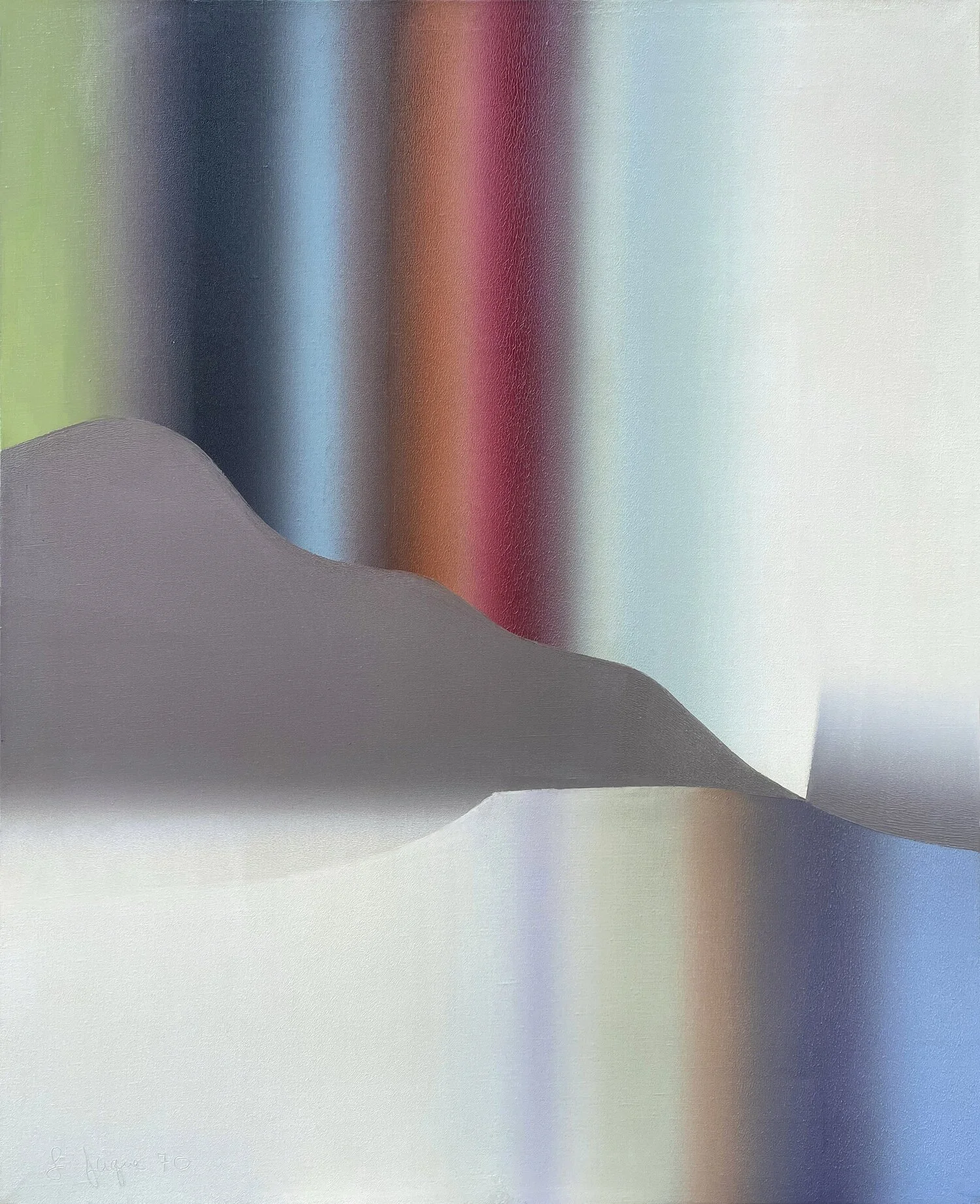Louis Jaque
Amidst the succession of retrospective exhibitions devoted to artists of his generation, it seemed that one had almost forgotten Louis Jaque, this independent artist who never signed manifestos, who never aligned himself with the various groups who “make history.” Half a century of assiduous work, and a rigorous pictorial research that is deeply personal in its means and purpose, have led the oeuvre of Louis Jaque from the firstr gouaches now housed mostly in museums to the large canvases of recent years which, having left the studio of the artist for the first time, can be viewed at Han Art gallery.
Light, an object of fascination since his childhood, stands resolutely at the center of his preoccupations. Has not the same quest truly been the lot of many artists throughout the ages? Forty years of painting to capture it, to modulate the interpenetration of colours with the help of the roller starting in 1962, refine the transition between hues, restore to matter its immanent light and vibrations. If one can exclude neither erotic nor mystical interpretations of the signs and forms that can be read on the surface of the canvas, it is truly the cosmos in its infinity that constitutes the real locus of the artist’s vision: that of the multiform emergence of the universe, and the northern lights, Aurora Borealis. The curls and shining undulations propel the viewer into space, into a very contemporary sidereal time, while the shifting refractions over icy expanses evoke the same spiritual realm found in the icebergs of Lawren Harris. Their conical and “tubist” gradations recall Malevitch and Fernand Léger, whom Louis Jaque met on two occasions in Montreal during the war. The volutes and the breathtaking unfurling characterize a signature which has made the two series Axes et flèches and Radiants cosmogènes into classics of Quebec art. In the same vein we encounter Wawate (“Aurora Borealis” in the Inuit languages), a fascinating diptych never exhibited before. The painting of Louis Jaque achieve a synthesis between the modernist experiments of the “Optical Art” movement and of the concept of the “Optical Art” movement and of the concept of “Space Painting,” but in a highly personal manner, without “hard edge,” repetition of the same motif, or “all overness.” Rather, he already anticipated in the 1970’s a postmodernist trend that re-actualizes the Baroque: curls, volutes, light, transcended space, vistas into infinity, and a cosmos that is incarnate and eroticized, notably in the series Intradorsales. Then, the signs depart, the forms become scarce, light is condensed into a majestic explosion, a blast of energy between two poles, Fulgurance (1983). The roller has become too demanding physically. The artist returns to the brush and takes up mixed media: oil, acrylic, aerosol. Inevitably, for a while, he revisits the paintings of his early years (e.g. Grégorienne no. 1), dating before his use of the roller. Between the zenith and Nadir (1991), he explores the diurnal and nocturnal registers of his personal astronomy only to preserve, in the end, mere shreds of fossils floating in the luminosity of a whitish fog. No more iridescent optical illusions and universal genesis…
Entrevue Monique Brunet-Weinmann - Louis Jaque
In this short extract of an interview, Monique Brunet-Weinmann, renown art critic and writer, speaks on Louis Jaque, and how his style differentiated him from his contemporaries. While the audio is in French only, if you click on the "CC" option at the bottom right corner of the screen, then go to "Settings", you can select "English" in order to better follow the conversation through the YouTube generated subtitles.









